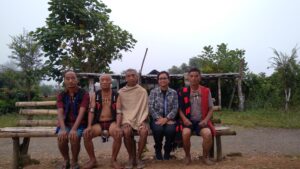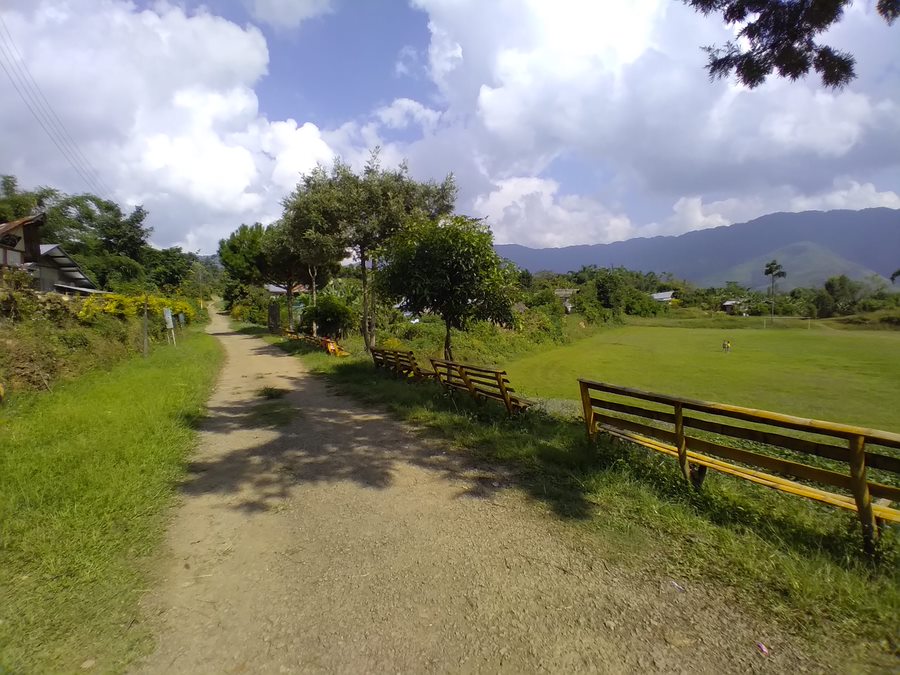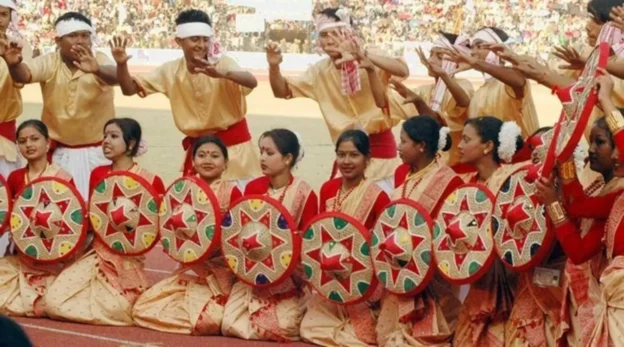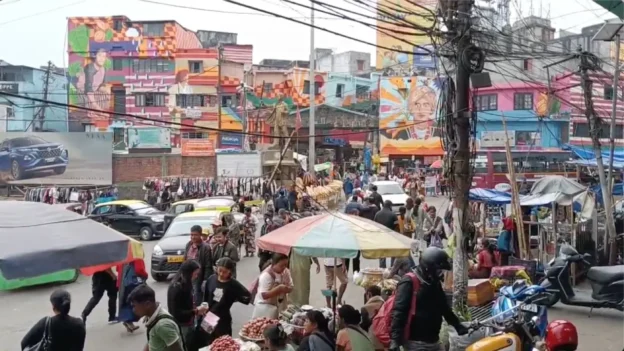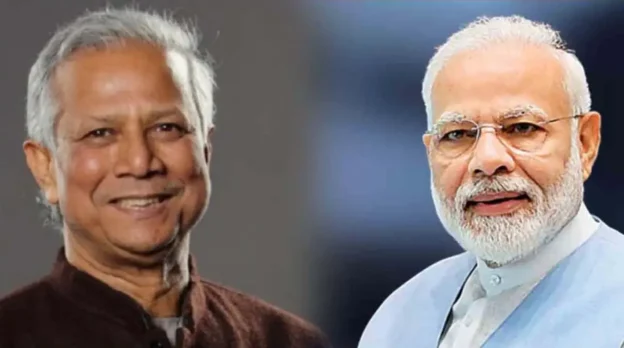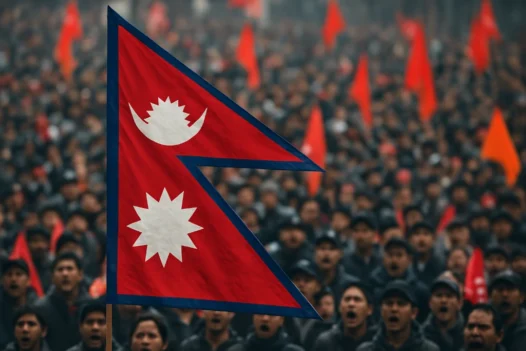Far from the maddening crowd, there lies the village Kingniu. It is nestled in the hilly Panso block, approximately 36 km from the district headquarters of Noklak district, in the state of Nagaland. Established in 2017, Noklak district was carved out of the Noklak subdivision of Tuensang district and shares its eastern borders with Myanmar. In this eastern part of Nagaland, several predominant tribes, including Chang, Khiamniungan, Konyak, Phom, Sangtham, Tikhir, and Yimkhiung, collectively account for more than 30% of the state’s population.
You may imagine this to be one of the most picturesque places, straight out of a postcard. As the day breaks, the cloud filled mountain peaks give way to fresh and crisp rays of the sun. You can feel the instant warmth and cool air on your face on a cold wintery morning. Photographs taken here by any lens, reflect absolute clarity due to lack of pollution. The night sky above is adorned with a blanket of twinkling stars, creating a breathtaking spectacle. This is Kingniu, the pristine and beautiful Kingniu.
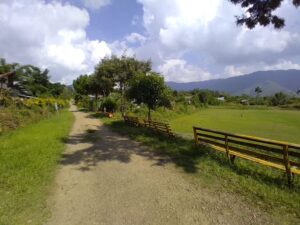
I had more than one reason to visit this place. Kingniu would be located about 350 plus kilometers away from Dimapur, the commercial capital of Nagaland. In the context of Nagaland, this distance is far, considering the difficult terrain and lesser all-weather roads for large stretches. But that did not discourage me from revisits, despite dancing with death experiences during the monsoons!
Jhum cultivation: Sustaining tradition in Kingniu
Amongst the Nagas who practiced headhunting, perhaps Khiamniungans in Kingniu village would be the most recent to have practiced headhunting, until Christianity came in 1965. This warrior tribe in Kingniu village exhibits dedication and hard work. Such is reflected in their daily activities, be it in their passion for artisanal handicrafts made with bamboo, traditional fabrics made with natural fibers woven by the women, or in their meticulously toiled Jhum fields.
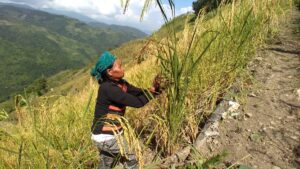
Jhum or shifting cultivation is primary to almost all the 120 plus families living in the village. The traditional customary governance system led by the Gaon bura – village headman, has worked out an elaborate system of 10 Jhum circles, surrounding the hilly landscape of the village. “Kingniu is fortunate to have eight out of the ten circles exclusively reserved for the village, while the remaining two Jhum circles are shared with the neighbouring villages of Nokhu and Sanglao” said Pesha Khiamngan, one of the prominent residents of Kingniu. “Each Jhum circle has hundreds of plots belonging to different families within the village. Each family ensures a plot or two in all the circles since fallow periods can extend up to twelve to fifteen years. As per the village rules, all the households move to the identified Jhum circle for that year for cultivation,” said Pesha.
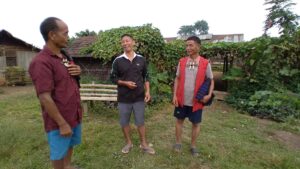
“Well, we have our own village traditional timekeepers”, continued Pesha. The traditional timekeepers of the village announce the specific times and seasons for sowing different crops, harvesting, felling of trees from forests for building houses, hunting, etcetera. They go by their indigenous knowledge and expertise honed over the years of studying the specifications of positionings of sun, moon, colour of the sky, sunlight, etc.
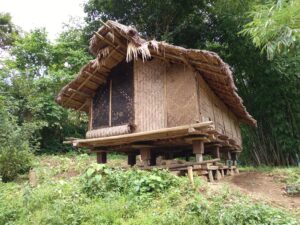
In the earlier days, the traditional log drum was beaten for important announcements including the time for sowing of seeds or in cases of any foreseen or possible emergencies. Different timekeepers are there for millet and all other crops, who sow the first seeds. The timekeepers would build the first “kheti ghor” or the Jhum hut in the designated Jhum circle for that year. “Growing and consuming millets has been integral to us for time immemorial”, said Pesha.
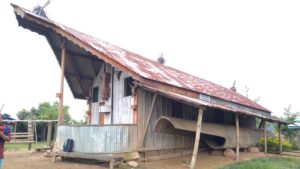
Unfortunately, the impacts of the change in climate are also seen in Kingniu. “The seasonal rains which help in softening of soils for sprouting of seeds, and flowering of fruit trees, are no longer coming. Now we must chase the timing of the rains and go along with the present change in the season. We are preserving and letting the mother trees in virgin forests continue to grow to bring back the season and rains”, said Mr. Sunie, the Head Gaon bura, who is also one of the traditional timekeepers.
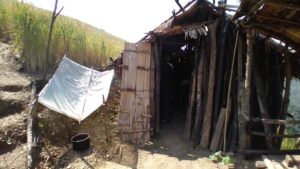
A new Jhum circle usually starts with paddy, followed by millets. If the soil is good, then different vegetables are grown. In a single plot, one can find between 18 to 20 diverse varieties of vegetables and herbs flourishing. The entire season for cultivations in one circle could go up to two and half years. “When the harvest is good, it sustains us for up to three years, yet when the new harvest arrives, many willingly share their bounty with those in need. Along with rice, Jhum farming gives us all the healthy food our bodies need”, says Pukho and his wife, Shongmao. The rodent and pest protected granaries are located away from the house, so that in case of any fire, grains are saved.
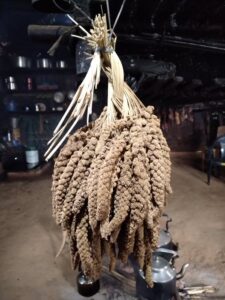
After the harvest, each family will pay tax to the owner of the Jhum circle who may be an individual, a family or clan. Tax is in the form of grains measured by a standard basket. No tax is paid to the owners of the circles which are not cultivated. Jhum farmlands of individual families are passed down from generations and could also be purchased.
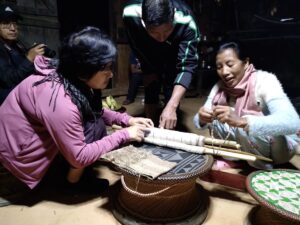
“As a child, we were all taught by our parents and elders to be respectful and mindful when walking on anyone’s field and not to stamp on plants. If needed, a farmer can rest, cook food, and use the essentials kept in the Jhum hut of other farmers. However, one must inform the owner of the plot about it on return to the village, or else it is considered a theft”, said Pesha Khiamngan.
Indigenous traditions and contemporary influences
While Kingniu village is typically serene, it comes alive when children studying elsewhere return home for Christmas. The children are generally sent out for further studies once they finish their primary education in the village. The kitchen fireplace is the heart of their homes where people share stories, skills, and cherished memories.
The kitchen in every Khiamniungan household can pass off as a museum consisting of varieties of indigenous seeds, hides, meat preserved over the fireplace in the center of the kitchen, while farm tools, handcrafted baskets, utensils, ladles of different shapes and sizes are kept tucked all along the kitchen walls and ceiling. This is where the past is seamlessly woven into the present, creating new stories for the generations to come.
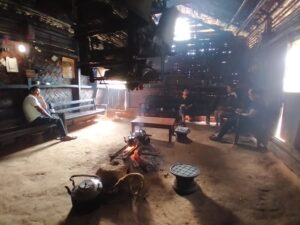
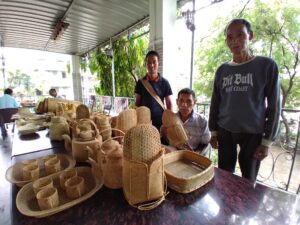
However, with the spread of modern education, material comforts, and the flow of benefits of various government schemes reaching the villages, there is a risk of upsetting the balance and harmony with nature that has sustained the community for generations. Change is inevitable at a time of indigenous urbanism. “Even Kingniu village is envisioning a holistic vision of future community development by carefully considering the importance of indigenous ways of life, cultural significance and correlation with nature”, said C Lusang, Chairman of the Kingniu Village Council.
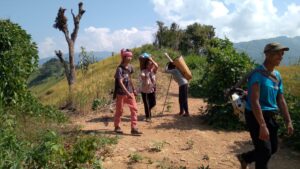
As I wrap up this piece, I cannot help but think that perhaps sometimes, being located away from the facilities in a remote border area, encourages a community to be self-sufficient and self-reliant. Maybe a little lack of external support systems makes a community more resilient in developing its own mechanisms.

As Kingniu, like many villages, navigates the current rush of the so-called development, the real challenge lies in preserving the ancestral wisdom of contentment—finding fulfillment within limits. Only time would tell the evolving chapters of Kingniu’s journey in this era of change.
